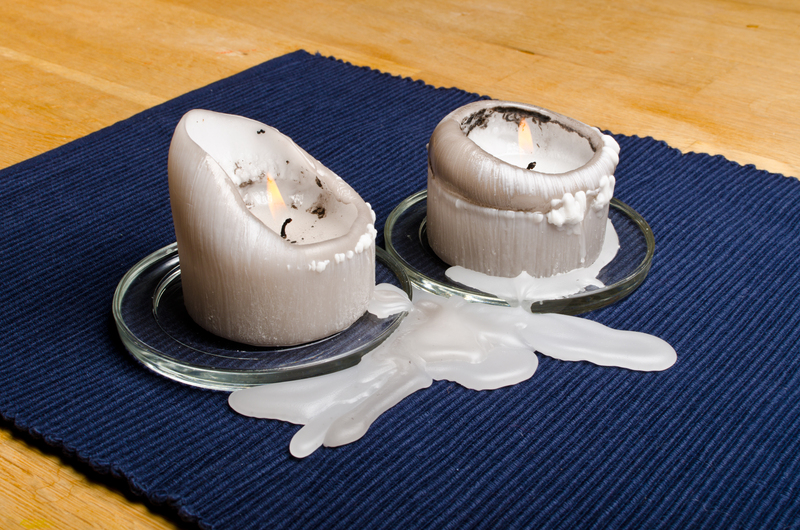Exploring the Crucial Role of Air Quality in Residential Health
Posted on 11/06/2025
Exploring the Crucial Role of Air Quality in Residential Health
Air quality is a cornerstone of healthy living, especially within our homes where we spend the vast majority of our time. Yet, many homeowners overlook its significance, unconsciously exposing themselves and their loved ones to potential airborne threats. In this article, we'll delve deeply into the vital connection between indoor air quality and residential health, discuss the factors that influence air purity, examine the health risks associated with poor air quality, and provide actionable strategies for maintaining a clean, healthy indoor environment.

Understanding Indoor Air Quality: What Does It Mean?
When we talk about residential air quality, we refer to the condition of the air within and surrounding homes, particularly as it relates to the health and comfort of occupants. Unlike outdoor air, indoor air quality is subject to unique challenges -- ranging from building materials and furnishings to lifestyle and cleaning habits.
Main Contributors to Indoor Air Quality
- Particulate Matter (PM2.5, PM10): Tiny airborne particles from dust, pollen, smoke, and pet dander.
- Volatile Organic Compounds (VOCs): Emitted by paints, disinfectants, air fresheners, and furniture.
- Mold and Fungi: Thrive in damp areas, releasing spores that can be toxic or allergenic.
- Biological Pollutants: Bacteria, viruses, and dust mites often present in unventilated homes.
- Gaseous Pollutants: Carbon monoxide, radon, and nitrogen dioxide from stoves, heating systems, and tobacco smoke.
Addressing these contaminants is essential for maintaining optimum air health at home.
How Does Air Quality Affect Residential Health?
Understanding the association between air quality and health is critical. Even short-term exposure to certain indoor pollutants can cause immediate symptoms, while prolonged exposure significantly increases the risk of chronic health issues.
Short-Term (Acute) Effects of Poor Air Quality
- Eye, nose, and throat irritation
- Headaches and dizziness
- Fatigue and difficulty concentrating
- Shortness of breath and coughing
- Asthma attacks in sensitive individuals
Long-Term (Chronic) Health Consequences
Repeated or continuous exposure to subpar home air quality can trigger serious, lasting health issues:
- Chronic respiratory diseases such as asthma, COPD, and bronchitis
- Heart disease and elevated blood pressure
- Allergies and hypersensitivities
- Potential development of cancer (due to substances like radon and formaldehyde)
- Impaired immune response and increased susceptibility to infections
Children, the elderly, and those with pre-existing health conditions are particularly vulnerable to the adverse effects of indoor air pollution.
Top Sources of Indoor Air Pollution in Residences
1. Household Products and Building Materials
Many seemingly harmless everyday items release VOCs and other chemicals. Common culprits include:
- Cleaning agents and disinfectants
- Pesticides and air fresheners
- Paints, varnishes, and adhesives
- New furniture and carpeting
These products, especially in enclosed spaces, can significantly degrade residential air quality.
2. Poor Ventilation
Modern homes are built to minimize air leakage for better energy efficiency. However, inadequate ventilation may cause indoor pollutants to accumulate, creating a stagnant and unhealthy environment.
3. Biological Sources
Mold growth, pet dander, dust mites, and even cockroach debris can all lead to elevated allergen levels and contribute to poor-quality indoor air.
4. Combustion Appliances
- Wood-burning stoves and fireplaces
- Gas stoves and heaters
- Unvented space heaters
- Tobacco smoking indoors
These sources can emit carbon monoxide, nitrogen dioxide, and other hazardous gases into your living space.
5. Outdoor Contaminants
Polluted outdoor air, pollen, and vehicle exhaust can enter homes through open doors, windows, and ventilation systems, further affecting home air quality.
Signs of Poor Residential Air Quality
Detecting compromised air quality in your home can sometimes be challenging, as symptoms often resemble those of other ailments like the common cold or allergies. Be alert for these signs:
- Persistent headaches, coughing, or sneezing indoors
- Musty or chemical odors that don't dissipate
- Increased allergy or asthma attacks
- Noticeable dust accumulation
- Mold or water stains on walls and ceilings
- Condensation on windows and surfaces
If you notice any of these issues, it may be time to assess your current home air quality.
The Importance of Air Quality Monitoring at Home
Regular air quality monitoring has become more accessible thanks to compact, user-friendly devices capable of detecting major pollutants in real time. Key benefits include:
- Early detection of hazardous conditions (like carbon monoxide leaks or high PM levels)
- Better understanding of pollution sources and patterns
- Ability to tailor mitigation and cleaning efforts
- Peace of mind for families, especially those with sensitive individuals
Monitoring is the essential first step toward ensuring a healthy indoor air environment for your family.
Effective Strategies to Improve Home Air Quality
1. Promote Adequate Ventilation
Good ventilation is key to expelling indoor contaminants and replacing stale air with fresh. To enhance ventilation:
- Use exhaust fans in kitchens and bathrooms.
- Open windows and doors regularly, especially while cleaning or cooking.
- Incorporate air exchangers or energy recovery ventilators in airtight homes.
2. Maintain Optimal Humidity Levels
Humidity that's too high encourages mold and dust mites, while dry air can exacerbate respiratory symptoms. Aim for an indoor relative humidity of 30-50%.
- Use dehumidifiers in damp areas
- Repair leaks and water damage promptly
- Utilize humidifiers during dry winter months if needed
3. Choose Low-Emission Products
Opt for household goods labeled "low VOC" or "eco-friendly." Minimize use of aerosol sprays and synthetic air fresheners; instead, try natural alternatives like essential oils or potpourri.
4. Embrace Regular Cleaning
- Vacuum with HEPA-filter units to capture fine particles and allergens
- Launder bedding and curtains often
- Dust surfaces with damp cloths to avoid particles being resuspended in the air
5. Filter and Purify Indoor Air
High-quality air purifiers with HEPA filters can remove up to 99.97% of airborne particles, while activated carbon filters trap odors and chemicals. Change HVAC filters every 2-3 months for optimal performance.
6. Restrict Pollutant Sources
- Place doormats at entryways to reduce tracked-in dirt and pollen
- Avoid indoor smoking and restrict candle or incense burning
- Store chemicals and paints outside living spaces, like in a garage or shed
7. Incorporate Indoor Plants Wisely
Plants like pothos, snake plant, and peace lily can help absorb certain VOCs and contribute to a more pleasant air quality environment. However, overwatering can foster mold, so moderation is key.
The Role of Air Quality in Prevention of Allergies and Asthma
Respiratory conditions such as allergies and asthma are particularly sensitive to indoor pollution. Elevated levels of dust, pet dander, mold spores, and VOCs can provoke or worsen attacks. Proactive management of residential air quality is thus one of the most efficient strategies for minimizing symptoms and ensuring a healthier, more comfortable daily life.
- Use allergen-proof covers: For mattresses and pillows to prevent dust mites.
- Remove carpets: Or switch to low-pile rugs to reduce allergen buildup.
- Control humidity: To inhibit mold growth and dust mite proliferation.
Sustainable Building Design and Smart Technology
Forward-thinking homeowners and developers are prioritizing healthy indoor air design by utilizing non-toxic building materials, maximizing natural ventilation, and implementing smart home technologies. Some innovations include:
- Smart thermostats and HVAC systems: Optimize air flow and filter efficiency in real time.
- Air quality monitors: Offer instant alerts for unsafe levels of pollutants.
- Green building certifications: Encourage the use of high-quality construction methods and eco-friendly materials.

Government Guidelines and Regulation
National and international health agencies have established recommended exposure limits for major indoor pollutants. For example, the EPA provides guidelines for safe residential air quality levels, while organizations like the WHO recognize indoor air as a prime health determinant.
- Radon mitigation: Testing and treatment are encouraged in radon-prone regions.
- Lead and asbestos control: Especially in homes built before the late 20th century.
- Public awareness campaigns: Educate homeowners about sources and solutions for better air quality.
Being aware of -- and following -- these guidelines is an important step toward creating a safe living environment.
Summary: The Promise of Cleaner Air for Healthier Homes
It's clear that the role of air quality in residential health is nothing short of crucial. From immediate allergy relief to long-term disease prevention, every improvement you make to your home's air is an investment in your family's well-being. By recognizing pollutant sources, maintaining good ventilation, cleaning regularly, and leveraging the latest technologies, you can enjoy fresher, safer air and reap the health benefits for years to come.
Take charge of your indoor air today, and make your home a sanctuary for health, comfort, and peace of mind.




